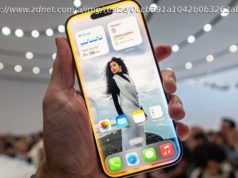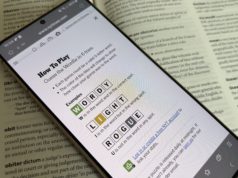Android 9 is called Android Pie and it’s available from 6 August on Pixel phones. Here’s what to expect from the new Android 9.0 OS.
Intelligence, simplicity and digital wellbeing are the three pillars of the new Android 9.0 Pie operating system, for which the official update is now available for Google Pixel phones.
Android Pie builds in hundreds of improvements now at the end of 2018, but some of the most important were discussed at the Google I/O 2018 keynote on 8 May.
If you’d like to install the Android P Beta you’ll be able to enrol for the Android Beta Programme. You can follow our full instructions here.
But the fourth beta has now been replaced by the official build which is being rolled out over the air first to the Google Pixel, Pixel XL, Pixel 2 and Pixel 2 XL.
The Beta is available on Pixel, Pixel XL, Pixel 2 and Pixel 2 XL, plus the Nokia 7 Plus, Essential Phone, Oppo R15 Pro, Sony Xperia XZ2, Vivo X21UD, Vivo X21, OnePlus 6 and Xiaomi Mi Mix 2S.
It was released for Pixel phones on 6 August 2018. It’s then up to each individual Android hardware manufacturer, in conjunction with mobile operators, to roll it out to other phones. This will take some time, sometimes even months.
Since the early days of Android updates have been named after sweet treats and in alphabetical order. So far we’ve seen:
In 2018 we now have Android Pie. As in a delicious sweet American pecan pie, not a chicken and mushroom mains. Sorry England.
Although Android 9.0 Pie is out for the Pixel phones, it won’t be immediately available to all Android devices. Other phones will be updated slowly (if at all) and we’ll start to see new phones arriving with Android Pie out of the box at September’s IFA 2018 show.
Android updates are rolled out by phone manufacturers and network operators rather than Google itself, because any Android updates must first be tweaked to work with any customisations they have made.
Those with vanilla interfaces — such as Nokia, which has already confirmed Android Pie updates for all 2017 phones — will be among the first to roll out the update, then the likes of Samsung, LG, Sony and HTC will begin rolling out Android 9.0 in late 2018/early 2019.
OTA updates, when they do arrive, are expected to download and install faster and use less data thanks to Google’s Brotli compression algorithm.
There’s also no guarantee that your device will be updated to Android 9.0 (see how to update Android). Device fragmentation is still a problem for the OS, and at a recent count (by Android Developers) on 7 May there were still devices running version 2.3.3 Gingerbread.
As well as the three main areas of intelligence, simplicity and digital wellbeing as detailed at the top of this article, Android P promises hundreds of other improvements. Some of these are touched on in the Android P Preview video above, and we’ve outlined some more rumours below.
An interface change is said to be coming to the apps tray, which will now scroll horizontally rather than vertically.
Previously XDA Developers has also suggested that Google will remove access to unofficial APIs (those not part of the official SDK) — news that will upset some developers.
Other changes we can expect to see in the upcoming update, according to the enthusiast site, include support for Wi-Fi Direct Printing support and Bluetooth hearing aids, and better integration for Android Things .
The new OS will also prevent malicious apps running in the background from accessing your camera and mic in order to spy on you, according to AOSP. We’ll have to wait and see how this affects anti-theft apps, a consideration pointed out by Slashgear.
One potential new feature is to do with smaller image file sizes. In iOS 11 Apple introduced HEIC files, which are also known as HEIF or High Efficiency Image Format. It’s the still image version of HEVC, which is the latest video codec. It makes for Jpeg images just 50 percent of their previous size, can store image edits and multiple photos in one file (think Live Photo and burst mode), and it supports transparency and 16-bit colour.
HEIC is not a proprietary image format developed by Apple itself, so there’s every possibility Google could opt for the same format. However, Google is also working with the Alliance for Open Media on its own version that is currently able to create images 15 percent smaller than HEIC. It would make sense to use the better version, of course, but for now the project is very much in its infancy. Whether it will be ready for Android 9.0 we simply don’t know.
There is some suggestion that a phone will need a reasonably powerful processor to take advantage of HEIC, however, which means budget phones may not get the change.
According to Bloomberg, Android is also set to be adapted to support phones with a ‘notch’ design, as introduced by the iPhone X. The upcoming OS will also support foldable displays, such as that of the Galaxy X, and devices with multiple displays.
Increased call blocking is another possibility, according to XDA, where users will even be able to block private numbers, pay phones and numbers that either have no ID or aren’t in your contacts list.
Another interesting rumour from XDA is that Android P will allow you to use your phone as a Bluetooth keyboard or mouse. It will work in a similar way to the new Samsung DeX dock for the Galaxy S9.
Google is also working on another operating system called Fuchsia, which some are saying could replace Android in the longer term.
What would you like to see in Android P? Let us know in the comments.
Read next: Best Android phones available right now
Follow Marie Black on Twitter.






